Papers by Serafin de Tapia
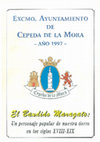
El bandido Maragato. Un personaje popular de nuestra tierra en los siglos XVIII-XIX, 1997
RESUMEN
El Bandido Maragato fue uno de los numerosos salteadores de caminos que los últimos años ... more RESUMEN
El Bandido Maragato fue uno de los numerosos salteadores de caminos que los últimos años del siglo XVIII y primeros del XIX infectaron las pésimas carreteras que cruzaban el Sistema Central castellano. Sus presas eran los escasos viajeros y los buhoneros que llevaban sus modestas mercancías a las aldeas de la zona. El Maragato tenía su guarida en una cueva situada en el término municipal de Cepeda de la Mora (Ávila). Su popularidad se debe a que en 1806 el pintor Goya hizo seis pequeños cuadros relatando el episodio de su detención por un aguerrido fraile al que intentó robar. En este breve artículo se contextualiza el fenómeno del bandidaje rural que asoló el centro del país en aquella época. En una coyuntura de adversidades económicas en el ámbito rural, este campesino de origen leonés abandonó el trabajo de la tierra e intentó ganarse la vida primero como arriero y después como carbonero. Finalmente, huyendo del hambre, se echó al monte a asaltar a quienes se atrevían a viajar en solitario por aquellas despobladas sierras.
Summary
The Maragato bandit was one of the numerous highwaymen who, at the end of the XVIIIth century and the beginning of the XIXth, infected the awful roads crossing the central Castilian mountains. His prey were the few travellers and the peddlers taking their modest cargo of goods to villages in the area. The Maragato had his hideout in a cave situated in the municipality of Cepeda de Mora (Avila). His popularity is due to the fact that in 1806 Goya painted six small canvases narrating the episode of his detention by a courageous monk whom he tried to rob. In this brief article I contextualise the rural banditry phenomenon that devastated the central part of the country during that time. In the context of economic adversities in rural areas, this peasant from León abandoned agricultural labour and tried to earn a living first as a mule driver and after as coal merchant. Finally, driven by hunger, he took to the mountains to attack those that dared to travel unaccompanied along those desolate lands.
Historia de Ávila, vol. IV Edad Media (siglos XIV-XV), ed. Institución Gran Duque de Alba, Ávila, 2009, pp. 729-736., 2009
Investigar el pasado para entender el presente. Homenaje al profesor Carmelo Luis López, 2019
Memoria de Bonilla. Su historia, su arte, sus gentes., 2022
Memoria de Bonilla. Su historia, su arte, sus gentes., 2023
Memoria de Bonilla. Su historia, su arte, sus gentes. , 2022
Memoria de Bonilla. Su historia, su arte, sus gentes, 2022
Memoria de Bonilla. Su historia, su arte, sus gentes., 2022
O. Villanueva Zubizarreta (coord.), Mezquitas y Cementerios Islámicos en la Castilla Medieval del Duero. UJA Editorial, 2021
El análisis de las fuentes, tanto de naturaleza archivística como material, relacionadas con la c... more El análisis de las fuentes, tanto de naturaleza archivística como material, relacionadas con la comunidad musulmana de Ávila durante la Edad Media, permite un acercamiento novedoso a un inmueble, sito en la C/Pocillo, 2, identificado hasta ahora -tanto popular como oficiosamente- como una de las sinagogas judías de la ciudad. Sin embargo, tanto por las fuentes mencionadas como por el análisis formal del edificio, se puede cuestionar esta atribución y desarrollar la hipótesis de que en realidad se trate del inmueble que albergó la primera de las mezquitas de la comunidad musulmana medieval de Ávila, conocida con los nombres de almagí Mayor, de la Villa o de San Esteban.
Folleto de la exposición, del mismo título, celebrada en el Museo de Ávila en los meses de noviem... more Folleto de la exposición, del mismo título, celebrada en el Museo de Ávila en los meses de noviembre y diciembre de 2019
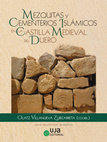
El almagí mayor (s. XIII-AV), primera mezquita de la aljama de moros abulenses. Una propuesta de ubicación", 2021
RESUMEN
El análisis de las fuentes, tanto de naturaleza archivística como material, relacionadas ... more RESUMEN
El análisis de las fuentes, tanto de naturaleza archivística como material, relacionadas con la comunidad musulmana de Ávila durante la Edad Media, permite un acercamiento novedoso a un inmueble, sito en la C/Pocillo, 2, identificado hasta ahora -tanto popular como oficiosamente- como una de las sinagogas judías de la ciudad. Sin embargo, tanto por las fuentes mencionadas como por el análisis formal del edificio, se puede cuestionar esta atribución y desarrollar la hipótesis de que en realidad se trate del inmueble que albergó la primera de las mezquitas de la comunidad musulmana medieval de Ávila, conocida con los nombres de almagí Mayor, de la Villa o de San Esteban.
ABSTRACT
The analysis of the sources, both archival and material in nature, related to the Muslim community of Ávila during the Middle Ages, allows a new approach to a building, located in C / Pocillo, 2, identified until now -both popularly and unofficially - like one of the city's Jewish synagogues. However, both from the sources mentioned and from the formal analysis of the building, this attribution can be questioned and the hypothesis developed that it is actually the property that housed the first of the mosques of the medieval Muslim community of Ávila, known with the names of Almagí Mayor, de la Villa or San Esteban.
Politica Y Sociedad, 1997
Aula. Revista de las Escuelas del Profesorado de EGB (Universidad de Salamanca), 1985

G. del Ser Quijano (Coord.), Congreso V Centenario del nacimiento del III Duque de Alba, 2008
This demographic research precedes and complements with the study of Avila peasants’ working and ... more This demographic research precedes and complements with the study of Avila peasants’ working and social life which we are planning to conduct. Given that we consider that the demographic variable is not autonomous but depends on and influences other (social, economic, political...) factors, it would not be logical to study it in isolation.
It is from this perspective that it makes sense to read these pages and to evaluate the quantity and numerical evolution of Avila countryside dwellers and their demographic behaviours.
Knowing the chronology of the change of the demographic cycle will help us to better understand the circumstances that constituted the agro-pastoral productive process of this territory: pressure on resources, relations of production, extra-economic exactions etc.
Analysis of the subsistence crisis allowed us to verify how, together with natural circumstances (droughts …), human decisions (fixed food pricing, the establishment of provident institutions) and the general political context played a part. We want to highlight that, in a century considered splendorous in the history of Avila, it’s peasant population, which constituted the majority and sustained the social structure, were struggling on the subsistence threshold, alternating between successes and failures. However, it was the latter that would finally prevail and resulted in a depression in the province that has lasted well into the XXth century.
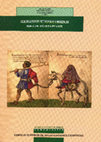
Circulaciones mudéjares y moriscas. Redes de contacto y representaciones, 2018
En dos localidades de Castilla la Vieja, la ciudad de Ávila y la cercana villa de Arévalo, vivier... more En dos localidades de Castilla la Vieja, la ciudad de Ávila y la cercana villa de Arévalo, vivieron sendas comunidades de moriscos antiguos numerosas y muy activas social y económicamente. Una de sus peculiaridades más notoria fue su predilección por la arriería y el comercio. En esta elección profesional influyeron diversos factores socioeconómicos y también su voluntad de buscar cierta independencia del control de los párrocos y de la Inquisición gracias a su constante movilidad. El análisis de la evolución cronológica de los lugares con los que se relacionaron, nos indica el cambio que el paso del tiempo fue produciendo en los objetivos de su actividad. Como reacción al incremento de la presión inquisitorial en las décadas centrales del siglo XVI, algunos moriscos se marcharon de estas tierras y se asentaron en lugares más tranquilos; los que se quedaron se sirvieron de sus redes comerciales para intentar preservar sus señas de identidad. La autoridad cristiana reaccionó tomando diversas medidas tales como infiltrar espías entre los moriscos, reforzar las relaciones entre las Inquisiciones territoriales, dificultar la gestión de los mesones por parte de los moriscos… A partir de la octava década del siglo, la capacidad de resistencia de nuestra minoría en esta región se debilitó y, en la misma proporción, las actividades de los recueros se centraron casi exclusivamente en las labores mercantiles. En el momento de la expulsión alguno de los mercaderes más dinámicos de Ávila participó en la red tejida por algunos judeoconversos de origen portugués en la evasión a Francia del oro y plata de los moriscos castellanos.
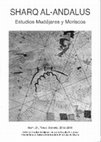
Sharq Al-Andalus, 2016
The aim of this article is to present not something unquestionably obvious but only a reasonable ... more The aim of this article is to present not something unquestionably obvious but only a reasonable hypothesis, which, if it is proven to be true, would enhance the understanding of the life and work of the Young Man of Arevalo. Starting with a description of the social life of Arevalo in the first half of the XVI century and the different manifestations of the Moorish community during the same period, which coincides with the life and work of the Young Man of Arevalo, I analyse the information contained in a law-suit filed by a royal civil servant to prevent a Moorish man from taking possession of the goods that his brother had left behind when he fled to Berber land around 1542 to “become a moor”. To strengthen his argument during the law-suit, the royal civil servant said that the Moor concerned was from a very Islamised family, and stated that around 1543 a younger brother of these Moors, called, Gutierre, had been caught reading and explaining the Coran to a Moorish group from Arevalo and other nearby villages, an act for which he was arrested and imprisoned in a convent where he died. Building on this information, my hypothesis is that this young man could have been the Young Man of Arevalo. We know who the parents, grandparents and other relatives of this Gutierre were and what they did as well as other specific sociological details of great interest: they were all well off, most of them being merchants that moved around the kingdom and some of them enjoying a certain social prominence in both the Moorish community and the local institutions in Arevalo. We can also date and reconstruct the main periods of the life of this character: his education at the Royal Palace of the town and the Franciscan monastery; then, when he was around 18 or 19 year old, he accompanies his father or one of his uncles on their journeys as merchants and he secretly gathers information and teachings from other Moors; about three years later he withdraws to Aragon where he writes his 3 books around 1533 or 1535; after that, he would go to Mecca on a pilgrimage returning to Arevalo in 1543 where he dies at the hands of the Inquisition.
Key words: arabic literature, criptomoslem, Inquisition, Young man of Arevalo, Moors.
VII Simposio Internacional de Mudejarismo, Teruel, 1996
Historia de la Educación. Revista interuniversitaria, 1994
1.- Consideraciones previas sobre el significado del fenómeno de la alfabetización. 2.- Los agent... more 1.- Consideraciones previas sobre el significado del fenómeno de la alfabetización. 2.- Los agentes de la alfabetización. 3.- Cómo medir el grado de la alfabetización. 4.- Niveles y evolución de la alfabetización en Ávila y Segovia. 5.- Análisis por grupos sociales y profesiones. 6.- Funcionalidad de la alfabetización



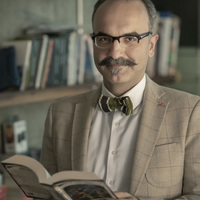
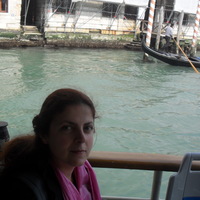

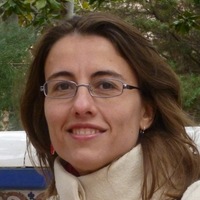




Uploads
Papers by Serafin de Tapia
El Bandido Maragato fue uno de los numerosos salteadores de caminos que los últimos años del siglo XVIII y primeros del XIX infectaron las pésimas carreteras que cruzaban el Sistema Central castellano. Sus presas eran los escasos viajeros y los buhoneros que llevaban sus modestas mercancías a las aldeas de la zona. El Maragato tenía su guarida en una cueva situada en el término municipal de Cepeda de la Mora (Ávila). Su popularidad se debe a que en 1806 el pintor Goya hizo seis pequeños cuadros relatando el episodio de su detención por un aguerrido fraile al que intentó robar. En este breve artículo se contextualiza el fenómeno del bandidaje rural que asoló el centro del país en aquella época. En una coyuntura de adversidades económicas en el ámbito rural, este campesino de origen leonés abandonó el trabajo de la tierra e intentó ganarse la vida primero como arriero y después como carbonero. Finalmente, huyendo del hambre, se echó al monte a asaltar a quienes se atrevían a viajar en solitario por aquellas despobladas sierras.
Summary
The Maragato bandit was one of the numerous highwaymen who, at the end of the XVIIIth century and the beginning of the XIXth, infected the awful roads crossing the central Castilian mountains. His prey were the few travellers and the peddlers taking their modest cargo of goods to villages in the area. The Maragato had his hideout in a cave situated in the municipality of Cepeda de Mora (Avila). His popularity is due to the fact that in 1806 Goya painted six small canvases narrating the episode of his detention by a courageous monk whom he tried to rob. In this brief article I contextualise the rural banditry phenomenon that devastated the central part of the country during that time. In the context of economic adversities in rural areas, this peasant from León abandoned agricultural labour and tried to earn a living first as a mule driver and after as coal merchant. Finally, driven by hunger, he took to the mountains to attack those that dared to travel unaccompanied along those desolate lands.
El análisis de las fuentes, tanto de naturaleza archivística como material, relacionadas con la comunidad musulmana de Ávila durante la Edad Media, permite un acercamiento novedoso a un inmueble, sito en la C/Pocillo, 2, identificado hasta ahora -tanto popular como oficiosamente- como una de las sinagogas judías de la ciudad. Sin embargo, tanto por las fuentes mencionadas como por el análisis formal del edificio, se puede cuestionar esta atribución y desarrollar la hipótesis de que en realidad se trate del inmueble que albergó la primera de las mezquitas de la comunidad musulmana medieval de Ávila, conocida con los nombres de almagí Mayor, de la Villa o de San Esteban.
ABSTRACT
The analysis of the sources, both archival and material in nature, related to the Muslim community of Ávila during the Middle Ages, allows a new approach to a building, located in C / Pocillo, 2, identified until now -both popularly and unofficially - like one of the city's Jewish synagogues. However, both from the sources mentioned and from the formal analysis of the building, this attribution can be questioned and the hypothesis developed that it is actually the property that housed the first of the mosques of the medieval Muslim community of Ávila, known with the names of Almagí Mayor, de la Villa or San Esteban.
It is from this perspective that it makes sense to read these pages and to evaluate the quantity and numerical evolution of Avila countryside dwellers and their demographic behaviours.
Knowing the chronology of the change of the demographic cycle will help us to better understand the circumstances that constituted the agro-pastoral productive process of this territory: pressure on resources, relations of production, extra-economic exactions etc.
Analysis of the subsistence crisis allowed us to verify how, together with natural circumstances (droughts …), human decisions (fixed food pricing, the establishment of provident institutions) and the general political context played a part. We want to highlight that, in a century considered splendorous in the history of Avila, it’s peasant population, which constituted the majority and sustained the social structure, were struggling on the subsistence threshold, alternating between successes and failures. However, it was the latter that would finally prevail and resulted in a depression in the province that has lasted well into the XXth century.
Key words: arabic literature, criptomoslem, Inquisition, Young man of Arevalo, Moors.
El Bandido Maragato fue uno de los numerosos salteadores de caminos que los últimos años del siglo XVIII y primeros del XIX infectaron las pésimas carreteras que cruzaban el Sistema Central castellano. Sus presas eran los escasos viajeros y los buhoneros que llevaban sus modestas mercancías a las aldeas de la zona. El Maragato tenía su guarida en una cueva situada en el término municipal de Cepeda de la Mora (Ávila). Su popularidad se debe a que en 1806 el pintor Goya hizo seis pequeños cuadros relatando el episodio de su detención por un aguerrido fraile al que intentó robar. En este breve artículo se contextualiza el fenómeno del bandidaje rural que asoló el centro del país en aquella época. En una coyuntura de adversidades económicas en el ámbito rural, este campesino de origen leonés abandonó el trabajo de la tierra e intentó ganarse la vida primero como arriero y después como carbonero. Finalmente, huyendo del hambre, se echó al monte a asaltar a quienes se atrevían a viajar en solitario por aquellas despobladas sierras.
Summary
The Maragato bandit was one of the numerous highwaymen who, at the end of the XVIIIth century and the beginning of the XIXth, infected the awful roads crossing the central Castilian mountains. His prey were the few travellers and the peddlers taking their modest cargo of goods to villages in the area. The Maragato had his hideout in a cave situated in the municipality of Cepeda de Mora (Avila). His popularity is due to the fact that in 1806 Goya painted six small canvases narrating the episode of his detention by a courageous monk whom he tried to rob. In this brief article I contextualise the rural banditry phenomenon that devastated the central part of the country during that time. In the context of economic adversities in rural areas, this peasant from León abandoned agricultural labour and tried to earn a living first as a mule driver and after as coal merchant. Finally, driven by hunger, he took to the mountains to attack those that dared to travel unaccompanied along those desolate lands.
El análisis de las fuentes, tanto de naturaleza archivística como material, relacionadas con la comunidad musulmana de Ávila durante la Edad Media, permite un acercamiento novedoso a un inmueble, sito en la C/Pocillo, 2, identificado hasta ahora -tanto popular como oficiosamente- como una de las sinagogas judías de la ciudad. Sin embargo, tanto por las fuentes mencionadas como por el análisis formal del edificio, se puede cuestionar esta atribución y desarrollar la hipótesis de que en realidad se trate del inmueble que albergó la primera de las mezquitas de la comunidad musulmana medieval de Ávila, conocida con los nombres de almagí Mayor, de la Villa o de San Esteban.
ABSTRACT
The analysis of the sources, both archival and material in nature, related to the Muslim community of Ávila during the Middle Ages, allows a new approach to a building, located in C / Pocillo, 2, identified until now -both popularly and unofficially - like one of the city's Jewish synagogues. However, both from the sources mentioned and from the formal analysis of the building, this attribution can be questioned and the hypothesis developed that it is actually the property that housed the first of the mosques of the medieval Muslim community of Ávila, known with the names of Almagí Mayor, de la Villa or San Esteban.
It is from this perspective that it makes sense to read these pages and to evaluate the quantity and numerical evolution of Avila countryside dwellers and their demographic behaviours.
Knowing the chronology of the change of the demographic cycle will help us to better understand the circumstances that constituted the agro-pastoral productive process of this territory: pressure on resources, relations of production, extra-economic exactions etc.
Analysis of the subsistence crisis allowed us to verify how, together with natural circumstances (droughts …), human decisions (fixed food pricing, the establishment of provident institutions) and the general political context played a part. We want to highlight that, in a century considered splendorous in the history of Avila, it’s peasant population, which constituted the majority and sustained the social structure, were struggling on the subsistence threshold, alternating between successes and failures. However, it was the latter that would finally prevail and resulted in a depression in the province that has lasted well into the XXth century.
Key words: arabic literature, criptomoslem, Inquisition, Young man of Arevalo, Moors.
http://www.jcyl.es/jcyl/patrimoniocultural/dueromudejar/
Omar Patún y Muhammad del Corral partieron de Ávila en otoño de 1491 para hacer la peregrinación a La Meca, lo que constituye uno de los cinco preceptos u obligaciones del creyente musulmán. Las complicaciones y dificultades del viaje hicieron que los castellanos deambularan por tierras de uno y otro lado del Mediterráneo durante más de cuatro años, viviendo experiencias únicas y extraordinarias. A su vuelta, y a su paso por tierras aragonesas, muy probablemente narraron sus aventuras a algunos correligionarios, y alguno de ellos puso por escrito (en lengua castellana y escritura arábiga, lo que se conoce como aljamiado) lo narrado por Patún. Esto explicaría que el manuscrito se encontrara entre los libros de un alfaquí de la villa turolense de Calanda, hoy conservado y custodiado en la Biblioteca de las Cortes de Aragón.
El relato del viaje de Patún y del Corral es un excepcional documento para conocer y analizar nuestro pasado intercultural, en especial el que tiene que ver con el Islam, pero también para comprender y orientar nuestro presente multicultural y plurirreligioso.